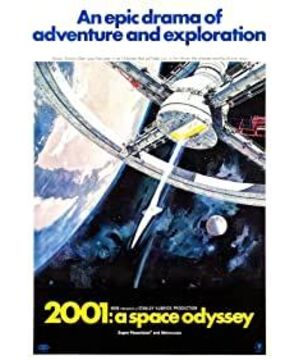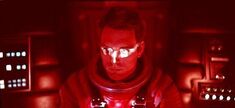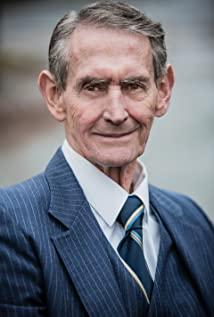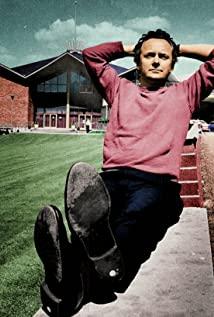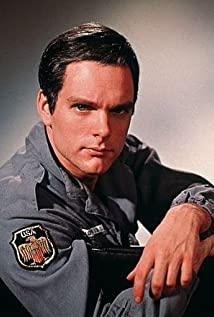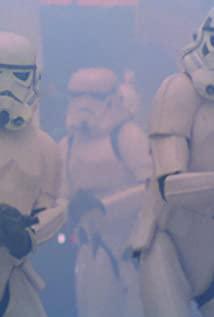The most painful thing to watch when reading a movie in college
"2001 A Space Odyssey"
You must know that you are lying on the bed in the bedroom and watching the opening movie for 3 minutes with a black screen
The ending is a proper sleep zzz
Not to mention the mysterious black stone behind
rumbling space symphony
Killer space robot
And why is there an extra baby floating in outer space? ? ?
What does this mean? ! Whisper BB: I believe that many people have never survived the dark three minutes of the title...
Four problems and one solution
Today we will talk about all kinds of confusions about "2001"
What is the purpose of the 5-minute black scene at the beginning of the film?
"2001 A Space Odyssey" is also known as "space epic", and it is a work with the origin of the film among Hollywood's space-themed films.
Before "2001", there were not no films involving the universe, the most famous of which was Méliès's "Journey to the Moon", but it only stayed in space elements, which is quite different from the space in our impression today.
And even though "2001" has established many types of elements of today's space films, such as how many degrees of black the sky should be, how dense the arrangement of stars should be, how far apart the distance between stars should be, and how to present the state of weightlessness... …
All in all, there has never been a standardized and convincing positioning before the emergence of "2001".
For audiences in the 1960s, 2001 was a spectacle, and there has never been a movie that made you feel like you were in space.
In order to strengthen this sensory experience, the first setting Kubrick made in the film was a 3-minute black scene at the beginning of the film.
Physiologically, if the audience is in a dark place for a long time, the pupils will naturally dilate, and the sensitivity to light will also increase accordingly.
Therefore, when the first ray of starlight in the film passes through the human iris, the senses will be more sensitive and intense than before, and the visual effects will be more gorgeous, which truly creates an illusion of seeing the blueprint of space.
At the same time, "Thus Spoke Zarathustra" gradually became stronger in the background music, which matched the darkness and gave "2001" a strong epic feel.
What the hell is a black stone tablet?
Anyone who has seen "2001" should know this weird black boulder, and the wall crack suspects that the Iphone20 may be designed like that.
Its appearance is matte and smooth, and the edges and corners are cut extremely closely, which is precise and neat. At first glance, it is a product of the post-industrial era.
When it first appeared on the ancient earth, it formed a huge contrast with the surrounding scenery.
One is a tight and strict industrial product, the other is a casual, rough natural environment. The juxtaposition of the two shows a high degree of confrontation between two different civilizations. In other words, the apes on the earth cannot even be called civilizations.
The apes were attracted by the stone tablet, and they used their limbs to touch and feel the stone representing advanced civilization, as if a group of God's chosen people were inspired by God.
After the first "close contact" with the stone tablet, the ape mastered the ability to use tools. It picked up an animal's skeleton and hit other objects, and for the first time felt the explosive force emitted by the non-physical body... At this moment, the ape was in Darwin took the first step on the evolutionary map.
The film sets a montage where the first part and the second part transition: the ape throws the skeleton into the sky, and when it falls again, it becomes a spaceship floating in space...
This clip is classic in that it uses the similarity to seem to imply that going to space is a journey apes must take after they have evolved.
The second time the stele appeared in the lunar base a million years later, when apes had evolved into humans, and space travel had long since become commonplace.
A group of scientists discovered the stele on the moon and conducted secret research, and humans approached the stele again with the same care as our ancestors. The leading Dr. Freud even touched the stone tablet in exactly the same way as the ape that was millions of years ago.
Looking at this action throughout the article, it is actually a small reminder to the core of the film: humans are more advanced than apes, but from a higher civilization, they are still inferior creatures at the lower end.
The third time the stele appeared near Jupiter's orbit. According to Arthur Clark's original novel "A Space Odyssey" series, the lunar expedition team found that the stele was sending a signal to Jupiter, so they sent a team to Jupiter to continue. visit.
It was these scientists who carried out the Jupiter mission and a robot controlled by the spacecraft staged a man-machine battle under the sky. (more on this later)
In short, after defeating the robot, David continued to fly to Jupiter, and encountered a stone monument again near the orbit. His spaceship flew towards the stone monument, but inadvertently opened an interstellar tunnel, and finally fell into a room that is very similar to the building of the earth. Inside.
In the room David saw his old self, and his dying self. It seems that multiple existence states of life in this room can coexist.
All kinds of signs point to the existence of extraterrestrial intelligent creatures, but they never show up.
The dying David raised a hand, the camera gave a panoramic view, and a stone tablet appeared silently in the room again...
After a back fight, the dying David disappeared, leaving a floating newborn baby on the bed.
The description of this passage is more detailed in Arthur Clarke's novel, and "2001" is somewhat omitted.
The novel points out that David's disappearance was absorbed by the stele, and his life experience and wisdom were integrated with the stele and became a part of civilization.
The stele is the symbol of civilization.
how did david turn back into a baby
Infants, more precisely "star children", are a state of intelligent life that surpasses human beings.
The soundtrack of the film has always emphasized the importance of "Thus Spoke Zarathustra", and also showed Kubrick's identification with Nietzsche's doctrine.
The so-called Zarathustra is a prophet of Zoroastrianism. Nietzsche wrote "Thus Spoke Zarathustra" with him as the core. The soundtrack in the film was composed by Richard Strauss according to his text. .
Nietzsche put forward the concept of "superman", pointing out that man is not the ultimate stage of evolution, but only an intermediate stage.
In 2001, it is obvious that Kubrick's analogy between humans and apes in contact with the stele is emphasizing this theme.
And the star child may be the ultimate evolution, the so-called "superman".
When David was absorbed by the stele, he was reborn as a star child, and the star child returned to Earth to take a look at the place where he was born... Continuing to bring civilization there, over and over again.
Maybe this is reincarnation?
Perhaps what we look like today is derived from the settings we have made for us in the future.
How did the man-machine war start?
The third chapter of the film, the Jupiter mission, is devoted to the confrontation between David and the robot HAL.
HAL was the most perfect robot in the world at the time. It never made mistakes in performing tasks. It could also simulate human emotions and communicate with real people. It was the dream of astronauts all over the world to have HAL as a partner, and it turned out to be a nightmare for David and his teammates.
It is clearly written in the novel that HAL is actually the only member of the entire spacecraft who was told the real mission, and his goal is to ensure the smooth execution of the mission.
Under this primary condition, once the crew had the idea of shutting down the machine, human intervention became the biggest obstacle for HAL to perform its mission. For this reason, it would not hesitate to kill people to keep the mission going smoothly.
HAL's subjective perspective is interspersed several times in Chapter 3, with a circular wide-angle window gazing out into the corners of the ship.
Through the use of subjective viewpoints, the audience recognizes HAL as a member of the crew.
The actor who dubs HAL is Douglas Ryan. His voice has both the feeling of a computer-simulated human voice and a coolness. His voice even contains a super intelligence that is enough to compete with humans.
This wisdom comes from the setting that HAL is a self-taught calculus. Under this reset, as long as HAL is given enough information, it can learn and evolve by itself, and become a true artificial intelligence.
On this level, it's another story about evolution.
HAL was originally another design. The crew designed him as a real person to better empathize with the crew.
And Kubrick insisted that the design of HAL should be as simple as possible, as simple as only one eye, no expression or any feedback, in order to maximize this mysterious and elusive, yet cool and cold feel.
It now appears that Kubrick made the right choice.
Scan QR code
Learn More Secrets of 2001: A Space Odyssey
View more about 2001: A Space Odyssey reviews


